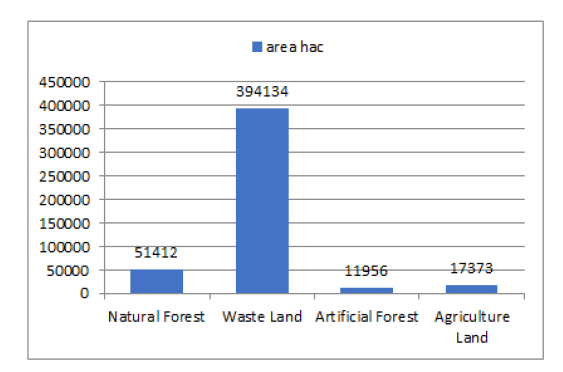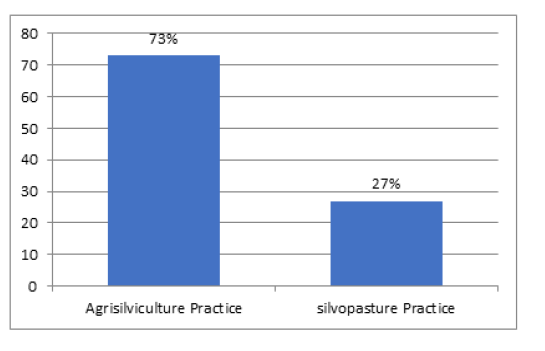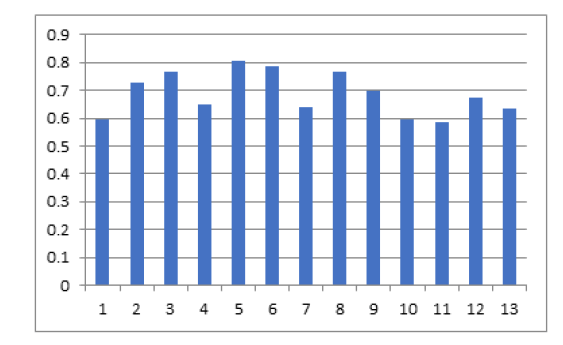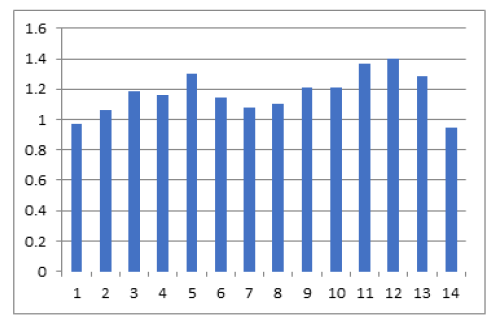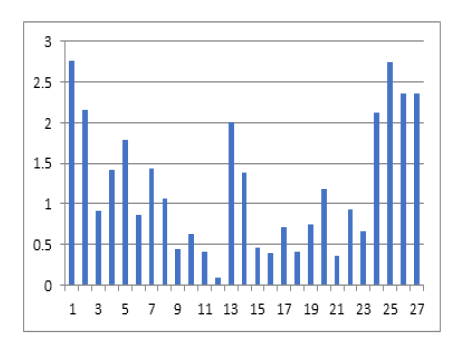ISSN : 2249 - 7412
Asian Journal of Plant Science & Research
AGROFORESTRY PRACTICES AND ITS CONTRIBUTION TO COMBAT CLIMATE CHANGE AT TEHSIL MIRANSHAH, NORTH WAZIRISTAN
Junaid Hassan*, Aamir Saleem and Sami Ullah
Department of Forestry and Range Management, Pir Mehr Ali Shah Arid Agriculture University, Rawalpindi, Pakistan
- *Corresponding Author:
- Junaid Hassan Department of Forestry and Range Management, Pir Mehr Ali Shah Arid Agriculture University, Rawalpindi, Pakistan, Tel: 92 3365505352; E-mail:junaiddawar111@gmail.com
Received date: October 25, 2019, Manuscript No. AJPSKY-19-2803; Editor assigned date: October 30, 2019, PreQC No. AJPSKY-19-2803 (PQ); Reviewed date: November 13, 2019, QC No. AJPSKY-19-2803; Revised date: November 30, 2022, Manuscript No. AJPSKY-19-2803 (R); Published date: December 28, 2022, DOI: 10.36648/2249-7412.12.12.032
Citation: Hassan J, Saleem A, Ullah S (2022) Agroforestry Practices and its Contribution to Combat Climate Change at Tehsil Miranshah, North Waziristan. Asian J Plant Sci Res Vol.12 No.12:032.
Abstract
Considering the large amounts of carbon accumulated as biomass in plantations, extensive planting of trees, which possess large canopies that are able to capture Carbon dioxide (CO2) from the atmosphere, could help mitigate the rising atmospheric CO2 levels. Many studies have been reported in assessing the importance of trees in combating climatic changes. However, assessing the importance of agro forestry practices, and its contribution to combat climatic change is lacking. This study planned to evaluate the potential of agroforestry practices and its contribution to combat climate change at Tehsil Miranshah, North Waziristan, Pakistan. Two kind of sampling methodology i.e. 1) Questionnaire based (collection of information with respect to agroforestry practices) and 2) Multistage stratified random sampling for estimating carbon content. In the study area we found seven species belonging to different families i.e. Salix tetrasperma belongs to family Saliceae, Moras alba belongs to Moraceae, Populas ciliata belongs to family Saliceae, Eacalyptus camaldulensis belongs to family Myrtaceae, Ziziphus maritiana belongs to family Rhamnacea, Ailanthus altissama belongs to family Simaroubaceae, Dilbargia sisso belongs to family Fabaceae. Among them mulberry was used maximum by farmers due to its importance in both agroforestry and fruit purposes. Willow and poplar were also used by most farmers to improve agroforestry practices. Two agroforestry practices were applied by farmers i.e. agrisilviculture and silvopasture. We found that 73% farmers practiced agrisilviculture while 27% farmer used silvopasture practice. The maximum use of agrisilviculture practice was because that area is more suitable for cultivation of trees and agriculture fields. There was minimum use of silvopasture practice because of having no suitable grazing land for cattles. That’s why most of the farmers preferred agrisilviculture practice. The area under agroforestry system was 17373 ha which is 3.66% of the total district area. The main reason for minimum percentage of agriculture is mismanagement of land, another cause is floods, and no proper drainage for agriculture land. The maximum quantity of carbon stock by agrisilviculture system was noted 1.328 tons ha-1, and minimum quantity of carbon stock per hectare was 0.973 while the normal carbon stock per hectare was 1.17 tons hec-1. In the silvipastoral system maximum quantity of carbon stored by the silvipasotoral system was 0.804 tons ha-1 and lowest carbon storage capacity was 0.587 while the normal carbon stocks stored by silvipastoral system were 0.686 tons hec- 1. The study will be useful for understanding the importance of agroforestry practices and its contribution to combat climate change at local and regional scale studies.
Keywords
Agroforestry; Carbon stock; Climatic change; North Waziristan; Pakistan
Introduction
A rural strategy that joins trees utilizing harvests and domesticated animals on a similar plot of land, agroforestry is especially broadly held in cutting edge countries since it lets minor investor ranchers who have moment land available to them to expand their methods [1]. They can plant vegetable and grain harvests round trees that makes organic product, nuts and wood for cooking fires, and the trees offer shadow for animals that convey milk and meat. The researchers examined information from 53 distributed investigations round the circle that pursued changes in soil natural carbon after land change from backwoods to trim development and field meadow to agroforestry [2]. While woods sequester around 25 percent additional carbon than any extra land use, agroforestry, on common, stores es-pecially further carbon than farming. The changeover from farming to agroforestry purposely expanded soil natural carbon a normal of 34 percent, as per Michael Jacobson, teacher of woods assets, whose review bunch in the college of agricultural studies drove the examination. The change from field/prairie to agroforestry made soil natural carbon increments of around 10 percent, all things considered [3].
Agroforestry is a naturally practical land use framework that keeps increment whole yield by joining nourishment crops (annuals) with tree crops (perennials) or potentially domesticated animals on the comparative real estate parcel [4]. A colossal hectare is open as limits, bunds, badlands where this framework can be received. Ranchers hold tree of Acacia nilotica, Acacia catechu, Dalbergia sissoo, Mangifera indica, Zizyphus mauritiana and Gmelina arborea and so on in homestead land. Agroforestry-the insightful course of action of woody perennials on the comparable piece of land with agrarian harvests as well as creatures, assumes an imperative job in environmental change moderation especially because of its tree part. Trees store CO2 (which is the best transcendent GHG) in their biomass. Agroforestry helps in environmental change alleviation as well as environmental change adjustment. It is a perceived data that despite the fact that our present exertion at atmosphere changes relief (GHG decrease), there is an all the more squeezing need to deal with the impact of environmental change (adjustment) [5]. For example, the trees in agroforests offer shadow for both friend crops and the rancher against the rising temperatures, and furthermore cover the yields against the destructive impact of seething tempests. The nearness of trees on the ranches guarantees salary broadening through the arrangement of extra assets like natural products, nuts, timber, vegetables, grub, and so forth. Publics ought to be responsive about the extension and welfares of agroforestry and they should contribute in application and advancement of agroforestry in India. In this manner, agroforestry framework is financially and earth sound practices with progress of entire homestead profitability, soil improvement through litter fall, saving biologi-cal administrations, for example, environmental change relief (carbon sequestration), phytoremediation, watershed security and biodiversity safeguarding [6].
All through the previous three decades, agroforestry has turned out to be prestigious the world over as an incorporated strategy to practical land use on account of its production and ecological aids. It presents acknowledgment as anozone harming substance moderation methodology under the Kyoto protocol has made it included commitment as a proce-dure for regular Carbon (C) sequestration [7]. The apparent potential depends on the reason that the bigger capability of coordinated frameworks in asset (supplements, light, and water) catch and use than single species frameworks will bring about more noteworthy net C sequestration. Existing assessments of C sequestration capability of agroforestry frameworks are coming about by joining data on the over the ground, time arrived at the midpoint of C stocks and the dirt C esteems; yet they are generally not thorough. Methodological intricacies in surveying C load of biomass and the scope of soil C stockpiling under fluctuating conditions are intensified by the nonappearance of dependable appraisals of region under agroforestry. We survey that the territory by and by under agroforestry all around is 1,023 million ha. In addition, significant degree of regions of inefficient harvest, grass, and woodland arrives just as corrupted grounds could be brought under agroforestry [8]. The degree of C sequestered in any agroforestry framework will rely upon various area specific characteristic, climatic, soil and the executives factors. In addition, the helpfulness of C sequestration undertakings will rely upon the cost of C in the global market, further salary from the clearance of items, for example, timber and the cost identified with C checking. Our data on these issues is unfortunately essential. Until such issues are surmounted, the minimal effort ecological advantage of agroforestry will keep on being over-looked and underexploited [9].
Expanding agroforestry biomass for bio control and biofuels and subsequently trading non-renewable energy source has likewise the possibility to decrease increments in barometrical CO2, Thus, agroforestry has been acknowledged as having the most noteworthy potential for carbon sequestration of all the land uses investigated in the land-use, land-use change and forestry report of the IPCC (2000) [10].
Materials and Methods
Study area
The current study work was conducted in Tehsil Miranshah, North Waziristan. Its geographical coordinates are 33°0’ 9” North, 70°4’ 8” East. The total area of Miranshah is 4707 km2 (470700 ha). The elevation ranges from 3050 feet to 3160 feet above the sea level. The temperature varies greatly over this area between summer and winter. While the precipitation varies from 400 mm to 1000 mm. The mean maximum and minimum temperatures during the month of June are 31°C and 18°C respectively. The flora of this area ranges from closed canopy to open patches, the developed plants are generally branchy and three story vegetation dimensions are present in which the higher trees, shrubs and grasses are present. Except the flora of the area here, the huge diversity of fauna is also present, in which the wild cats, dogs, jackals and the birds are included. The area is preferred by agriculture as well as the horticulture practices [11].
Study design
For the current research study, two kind of sampling methodology for data collection were used. For the collection of information with respect to agroforestry practices, constructed questionnaire while for the collection of information about carbon contents stored in these agroforestry systems, multi-stage stratified random sampling technique were used. In this manner, I got around 27 plots in the study area [12].
Agroforestry systems
In the research area the following agroforestry systems were studied. Agrisilvicultural system, in these system crops with relate to forest trees were studied. Silvopastoral system, in these system grasses (for livestock) with forest trees were studied.
Sample plot selection and size (For DBH and height measurement)
Random sample were selected in each agroforestry system. The block plantation dimensions of the sample plot was 33 × 33 m2 while plot was square having fixed dimension 0.5 × 0.5 km2 (50 hectares) in boundary, linear, shelterbelt plantations. GPS was used in order to determine the elevation and coordinates of each sample plot. 0.1 ha was the size of sample plot [13].
Results and Discussion
Measurement of stem biomass
By multiplying basic wood density (kg m-3) and tree volume (m3) stem biomass was calculated. From available literature the value of basic wood density was taken. The following formula was used for biomass calculation.
Stem biomass (t ha-1)=Basic wood density (kg m-3) × tree volume (m3 ha-1)/1000
Measurement of total biomass
From stem biomass and Biomass Expansion Factor (BEF) Total tree biomass (t ha-1) was estimated. From the following formula total biomass was estimated,
Total tree biomass (t ha-1)=Stem biomass (t ha-1) × BEF
Estimation of carbon stocks
Total biomass was multiplied with conversion factor of 0.5, for the estimation of carbon stocks which has been proved worldwide. From the below formula the total carbon stocks was calculated.
Total carbon stocks (T ha-1)=Total biomass (T ha-1) × 0.5
Measurement and data analysis for dead wood and litters
1 m2 plot was taken with the help of quadrate in order to find out the calculation of biomass of litters, deadwood (T.ha-1). All the litters and dead wood were collected and weighted with balance. In order to dry in oven for 48 hours at 72°C, 1 kg sample was brought to laboratory and after that biomass and carbon stocks (tons per ha) was calculated with given formulae (Figures 1 and 2) (Table 1).
| Instruments | Data collection |
|---|---|
| Questionnaire | For Preferred Species planted on Farmlands and for agroforestry systems |
| Ranging rod | For plot boundaries selection |
| Measuring tap | For DBH measurement |
| Staff rod | For height measurement |
| Relaskope | For tree height, DBH measurement |
| 1m2 quadrates | For letters and dead wood |
| Soil auger | For soil samples collection |
| Global Positioning System (GPS) | For taking co-ordinates and elevation |
| Pencil and field book | For record data in field |
Table 1: Instruments used for data collection.
To find out the farmers approaches towards different agricultural systems I constructed questionnaire, and about 130 farmers were interviewed. A total of 17373 ha agriculture land in the study area which is 3.66% of the total district area. Among these 73% farmer’s practices agrisilviculture system while 27% farmers prefers silvipastural system.
From the above data it is clear that majority of the farmers prefer agrisilviculture practice because the soil of the study area is more suitable for cultivation of both agriculture and trees species [14].
Carbon sequestration by silvipastoral system
The silvipastoral system total 13 sample plots were taken. For the calculation of carbon stocks, volume table was developed. Biomass and carbon stocks were calculated. The maximum amount of carbon stored by the silvipasotoral system was 0.804 tons hec-1 and minimum carbon storage capacity was 0.587 while the average carbon stocks stored by silvipastoral system was 0.686 tons hec-1. Details of carbon stocks stored in each plot is given while the graphical presentation of carbon stocks per plot per hectare is given in Figure 3 [15].
Carbon sequestration by agrisilviculture system
In the agrisilviculture system 14 plots were taken. Carbon stock was calculated with the help of volume table. Carbon stock and biomass was calculated. The maximum amount of carbon stock by agrisilviculture system was recorded 1.328 t.ha-1. The minimum amount of carbon stock per hectare was 0.973 while the average carbon stock per hectare was 1.17 t.ha-1. Details of carbon stocks stored in each plot is given while the graphical presentation of carbon stocks per plot per hectare is given in Figure 4.
Carbon stocks sequestration by all agroforestry systems
In all the 27 plots the minimum carbon storage was 0.09 and the maximum amount of carbon storage was 2.75 tons per hectare and the average value in all the plots was 1.21 tons per hectare. Details of carbon stocks stored in each plot is given while the graphical presentation of carbon stocks per plot per hectare (Figure 5 and Table 2).
| Plot No. | Grasses green weight (kg) | Grasses dry weight (kg) | Dead wood +letter (kg) | Oven dry weight in kg | Total biomass/hac (kg) | C. stock kg/ha | C. stock t.ha-1 |
|---|---|---|---|---|---|---|---|
| 1 | 0.113 | 0.05 | 0.149 | 0.25 | 2935.33 | 1468 | 1.46 |
| 2 | 0.112 | 0.04 | 0.017 | 0.03 | 731.33 | 366 | 0.36 |
| 3 | 0.065 | 0.03 | 0.09 | 0.15 | 1760 | 880 | 0.88 |
| 4 | 0.15 | 0.06 | 0.073 | 0.12 | 1816.7 | 908 | 0.9 |
| 5 | 0.145 | 0.06 | 0.09 | 0.15 | 2080 | 1040 | 1.04 |
| 6 | 0.115 | 0.05 | 0.112 | 0.19 | 2326.7 | 1163 | 1.16 |
| 7 | 0.14 | 0.06 | 0.144 | 0.24 | 2960 | 1480 | 1.48 |
| 8 | 0.124 | 0.05 | 0.17 | 0.28 | 3329.33 | 1665 | 1.6 |
| 9 | 0.115 | 0.05 | 0.201 | 0.34 | 3810 | 1905 | 1.905 |
| 10 | 0.155 | 0.06 | 0.22 | 0.37 | 4286.7 | 2143 | 2.14 |
| 11 | 0.135 | 0.05 | 0.135 | 0.23 | 2790 | 1395 | 1.395 |
| 12 | 0.16 | 0.06 | 0.11 | 0.18 | 2473.3 | 1237 | 1.23 |
| 13 | 0.142 | 0.06 | 0.19 | 0.32 | 3734.7 | 1867 | 1.86 |
| 14 | 0.144 | 0.06 | 0.08 | 0.13 | 1909.33 | 955 | 0.95 |
| 15 | 0.16 | 0.06 | 0.081 | 0.14 | 1990 | 995 | 0.995 |
| 16 | 0.159 | 0.06 | 0.09 | 0.15 | 2136 | 1068 | 1.068 |
| 17 | 0.135 | 0.05 | 0.049 | 0.08 | 1356.67 | 678 | 0.63 |
| 18 | 0.207 | 0.08 | 0.113 | 0.19 | 2711.3 | 1356 | 1.35 |
| 19 | 0.19 | 0.08 | 0.15 | 0.25 | 3260 | 1630 | 1.63 |
| 20 | 0.17 | 0.07 | 0.165 | 0.28 | 3430 | 1715 | 1.715 |
| 21 | 0.156 | 0.06 | 0.125 | 0.21 | 2707.3 | 1354 | 1.35 |
| 22 | 0.149 | 0.06 | 0.225 | 0.38 | 4346 | 2173 | 2.173 |
| 23 | 0.203 | 0.08 | 0.245 | 0.41 | 4895.3 | 2448 | 2.44 |
| 24 | 0.263 | 0.11 | 0.15 | 0.25 | 3552 | 1776 | 1.776 |
| 25 | 0.225 | 0.09 | 0.201 | 0.34 | 4250 | 2125 | 2.125 |
| 26 | 0.24 | 0.1 | 0.11 | 0.18 | 2793.33 | 1397 | 1.39 |
| 27 | 0.243 | 0.1 | 0.15 | 0.25 | 3472 | 1736 | 1.736 |
| Total | 4.315 | 1.73 | 3.635 | 6.06 | 77843.3 | 38921.7 | 38.92 |
Table 2: Combine agroforestry systems carbon stocks (grasses litter and deadwood) t.ha-1.
To find out the carbon stocks of grasses, litters and deadwood (t.ha-1) in all agroforestry systems, with the help of quadrate 1 m2 plot was taken. Litters, deadwood and all the grasses was collected and weighted with balance. 1 kg sample was brought to laboratory to dry in oven for 48 hours at 72°C and after that carbon stock and biomass (tons per ha) was then calculated. A total 27 quadrats were laid down in all agroforestry system. And the minimum contribution by plot was 0.36 tons/hec and the maximum contribution by a plot was 2.44 t.ha-1 while the average carbon stock per hectare was 1.43 t.ha-1.
There were total seven species in the study area belonging to different families. Salix tetrasperma belongs to family Saliceae, Moras alba belongs to Moraceae, Populas Ciliata belongs to family Saliceae, Eacalyptus camaldulensis belongs to family Myrtaceae, Ziziphus maritiana belongs to family Rhamnacea, Ailanthus altissama belongs to family Simaroubaceae, Dilbargia sisso belongs to family Fabaceae.
In the study area two agroforestry practices were applied by farmers namely agrisilviculture and silvopasture. 73% farmers used agrisilviculture practice while 27% farmer used silvopasture practice. The maximum use of agrisilviculture practice was because that area is more suitable for cultivation of trees and agriculture fields. There was minimum use of silvopasture practice because of having no proper grazing land for cattles. That’s why most of the farmers preferred agrisilviculture practice.
In the agrisilviculture system 14 plots were taken. Carbon stock was calculated with the help of volume table. Carbon stock and biomass was calculated. The maximum quantity of carbon stock by agrisilviculture system was noted 1.328 t.ha-1. The minimum quantity of carbon stock per hectare was 0.973 while the normal carbon stock per hectare was 1.17 t.ha-1.
In the silvipastoral system total 13 sample plots were taken. For the calculation of carbon stocks, volume table was developed. Biomass and carbon stocks were calculated. The maximum quantity of carbon stored by the silvipasotoral system was 0.804 t.ha-1, and lowest carbon storage capacity was 0.587 while the normal carbon stocks stored by silvipastoral system was 0.686 t.ha-1.
Conclusion
In order to find out the carbon stocks of grasses, litters and deadwood (t.ha-1) in all agroforestry systems, with the help of quadrate 1 m2 plot was taken. Deadwood, and all the grasses, litters was collected and weighted with weighing scale. 1 kg sample was taken to laboratory to dry in oven for 48 hours at 72°C and later that carbon stock and biomass (tons per ha) was then calculated. Overall 27 quadrats were arranged in all agroforestry system. And the lowest contribution by plot was 0.36 t.ha-1 and the maximum contribution by a plot was 2.44 t.ha-1 while the average carbon stock per hectare was 1.43 t.ha-1.
References
- Jose S, Bardhan S (2012) Agroforestry for biomass production and carbon sequestration: An overview. Agroforestry Systems 86: 105-111.
[Crossref] [Googlescholar] [Indexed]
- Mbow C, Smith P, Skole D, Duguma L, Bustamante M (2014) Achieving mitigation and adaptation to climate change through sustainable agroforestry practices in Africa. Current Opinion Environ Sustainability 6: 8-14.
- Nabunya M (2017) Contribution of agroforestry practices to reducing farmers’ vulnerability to climate variability in Rakai district, Uganda. Institute of Int’l Forestry Forest Products Co-supervisor.
[Googlescholar] [Indexed]
- Ramachandran Nair P, Mohan Kumar B, Nair VD (2009) Agroforestry as a strategy for carbon sequestration. J Plant Nutrition Soil Sci 172: 10-23.
[Crossref] [Googlescholar] [Indexed]
- Torres CMME, Jacovine LAG, de Olivera Neto SN, Fraisse CW, Soares CPB, et al. (2017) Greenhouse gas emissions and carbon sequestration by agroforestry systems in southeastern Brazil. Scientific Reports 7: 16738.
[Crossref] [Googlescholar] [Indexed]
- van NM, Hoang MH, Neufeldt H, Oborn I, Yatich T (2011) How trees and people can co-adapt to climate change. Reducing Vulnerabil Multifunct Landscapes 136.
[Googlescholar] [Indexed]
- Wang Y (2002) Uncertainties and novel prospects in the study of the soil carbon dynamics. Chemosphere.
- Szott LT (1991) Agroforestry in acid soils of the humid tropics. Adv. Agron 45: 275-301.
[Crossref] [Googlescholar] [Indexed]
- Mathuva MN (1998) Improving maize yields in semi-arid highlands of Kenya: agroforestry or fertilisers? Field Crops Res 55:57-72
[Crossref] [Googlescholar] [Indexed]
- Lehmann J (1998) Short-term effects of soil amendment with three legume biomass on carbon and nitrogen in particle size separates in central Togo. Soil Biol Biochem. 30: 1545-1552.
[Crossref] [Googlescholar] [Indexed]
- Le Mer J (2001) Production, oxidation, emission and consumption of methane by soils: A review. Eur J Soil Biol 37: 25-50.
[Crossref] [Googlescholar] [Indexed]
- Kürsten E (2000) Fuelwood production in agroforestry systems for sustainable land use and CO2 mitigation. Ecol Eng 16: 69-72.
[Crossref] [Googlescholar] [Indexed]
- Keutgen N (2001) Responses of citrus leaf photosynthesis, chlorophyll fluorescence, macronutrient and carbohydrate contents to elevated CO2 J. Plant Physiol 158: 1074-1316.
[Crossref] [Googlescholar] [Indexed]
- Kang BT (1997) Alley cropping soil productivity and nutrient recycling. For Ecol Manage 91: 75-82.
[Crossref] [Googlescholar] [Indexed]
- Kandji ST (2001) Diversity of plant parasitic nematodes and their relationships with some soil physico-chemical properties in improved fallows in western Kenya. Appl Soil Ecol 18: 143-157.
[Crossref] [Googlescholar] [Indexed]

Open Access Journals
- Aquaculture & Veterinary Science
- Chemistry & Chemical Sciences
- Clinical Sciences
- Engineering
- General Science
- Genetics & Molecular Biology
- Health Care & Nursing
- Immunology & Microbiology
- Materials Science
- Mathematics & Physics
- Medical Sciences
- Neurology & Psychiatry
- Oncology & Cancer Science
- Pharmaceutical Sciences
